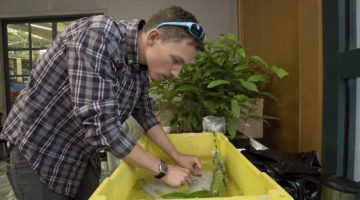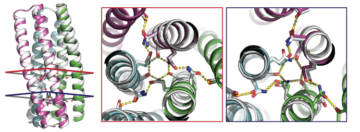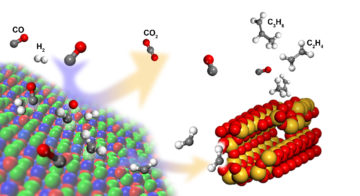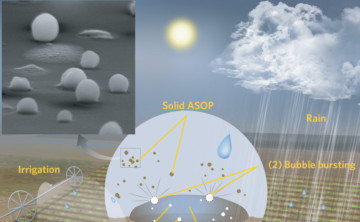what is in this table? New A Surface Treatment for Improving Fuel-Cell Cathodes Solid-oxide fuel cells (SOFCs) are a promising path toward the “clean” conversion of chemical energy to electrical energy with little or no carbon dioxide emission. With the help of the ALS, researchers from MIT recently found a way to treat SOFCRead More Read more »
Around the ALS in Photos: Plant-a-thon!
To resolve open questions about plant plumbing–how plants transport water from roots through stems and how they respond to stresses such as drought–science teams from around the world met September 1-3 at the ALS for an intensive round of x-ray and other experiments. See photos of the event in our photo essay. Read more »
ALS in the News (Sep 2016)
- Teams of Scientists Gather at Berkeley Lab to Study Secrets of Plants’ Plumbing
- Berkeley Lab Hosts UK Scientific Technology Facilities Council
- Researchers Peel Back Another Layer of Chemistry with ‘Tender’ X-rays
- Calcium channel blockers caught in the act at atomic level
- A New Way to Display the 3-D Structure of Molecules
- 2016 R&D 100 Awards – Berkeley Lab Finalists
- Fadley is Honorary Member of International Scientific Committee
- Energy Department to Invest $16 Million in Computer Design of Materials
Shedding Light on Postdocs
Postdocs are a significant portion of Berkeley Lab’s workforce, and the same is true at the ALS, where 42 postdocs are currently employed by or receiving a stipend from the ALS. To provide a forum and resources for this large contingent at the Lab, the Berkeley Lab Postdoc Association (BLPA) was recently established by a small group of postdocs. Read more »
Researchers Peel Back Another Layer of Chemistry with ‘Tender’ X-Rays
Scientists can now directly probe a previously hard-to-see layer of chemistry, which forms in a narrow band where liquid meets solid, thanks to a unique x-ray toolkit developed at Berkeley Lab. Read more »
A Surface Treatment for Improving Fuel-Cell Cathodes
Solid-oxide fuel cells (SOFCs) are a promising path toward the “clean” conversion of chemical energy to electrical energy with little or no carbon dioxide emission. With the help of the ALS, researchers from MIT recently found a way to treat SOFC cathode surfaces so that they perform better and last longer. Read more »![]()
![]()
Improving Alloy Memory by Tuning Material Composition
Shape memory alloys can “remember” their original form and return to it repeatedly when heated. To gain structural insight into a new alloy capable of sustaining millions of cycles without failure, researchers performed x-ray Laue microdiffraction at ALS Beamline 12.3.2. Read more »
Validation of Novel Proteins Inspired by Nature
Designed proteins containing hydrogen-bonding modules have been validated by crystallography and SAXS. The ability to design synthetic molecules that combine the specificity of DNA-like binding with protein function opens up huge opportunities for the fields of synthetic biology and materials science. Read more »
New Catalyst Boosts Selective Formation of Olefins from Syngas
Experiments at the ALS have helped to explain how a new catalyst significantly boosts the selective formation of light olefin molecules—important building blocks in the petrochemical industry—from syngas. The new process could allow for the use of alternative syngas feedstocks that save water and energy. Read more »![]()
![]()
A Cleansing Rain Falls; a Soil-Filled Mist Arises
Rain’s reputation for cleansing the air may come with a caveat after new findings, including STXM and NEXAFS data, show that raindrops play a role in generating airborne organic particles. The findings could influence how scientists model our planet’s climate and future. Read more »
- « Previous Page
- 1
- …
- 73
- 74
- 75
- 76
- 77
- …
- 83
- Next Page »








